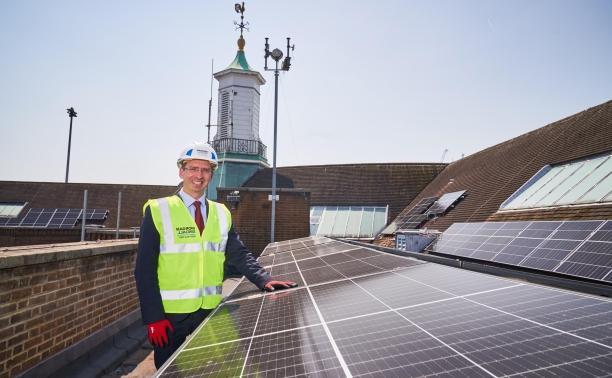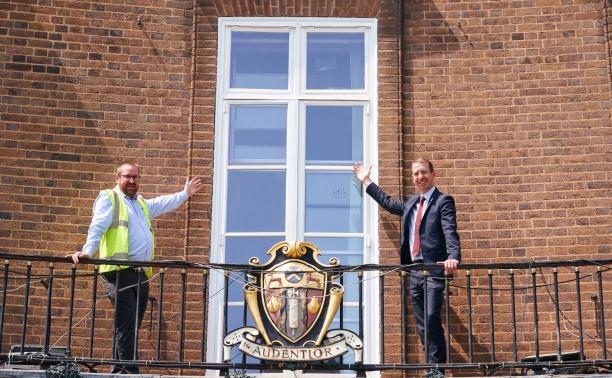
To help the council’s key commitments towards carbon neutrality by 2030 and transforming the top of the town centre, energy efficiency measures have been installed at the Town Hall and Colosseum...
These substantial improvements - which include over 180 solar panels - were made possible through a £3.2 million grant from the Department for Business, Energy and Industrial Strategy, and it has meant the energy performance of both the Colosseum and Watford Town Hall has been significantly improved through this transformative project.
As part of the initiative, the council has installed 144 state-of-the-art photovoltaic (PV) panels on the roof of the Town Hall and 36 on the Colosseum to harness renewable energy, reducing the reliance on traditional power sources. It is expected to save 24 tonnes of carbon dioxide (CO2) per year.
Thermally energy efficient improvements have also been carried out in both heritage buildings to minimise heat loss. This includes restoration of the windows, part of the original building fabric, which has meant the rate of heat transfer through the windows (U-value) is being decreased by 75%. This work also minimised material waste and produced a sustainable and historically faithful outcome for the Grade II listed buildings built in 1939.
Another measure to improve energy efficiency has included replacing all the lights with light-emitting diode (LED) equivalents, as well as installing new roof and cavity wall insulation within Colosseum and Town Hall. Estimations show that this should save 166 tonne annual saving in carbon.
Other notable sustainability milestones achieved thanks to the project includes 99% of waste on site being redirected away from landfill, as well as an estimated combined reduction of 50% on the gas bill and 32% reduction on electricity across both buildings.

This notable 'decarbonisation' project represents a crucial element of the council's ambitious 10-year Town Hall Quarter programme, which via eight interconnected projects aims to stimulate substantial investment in the area over the next decade.
Notably, the refurbed Colosseum will be re-opening next year with world-leading live entertainment company and new operator AEG Presents, and the Town Hall is being repurposed for future generations to include the Museum and a hub to support local community organisations, as well the creation of an innovation business hub.
Elected Mayor of Watford, Peter Taylor, said: “I am pleased that we have successfully completed our energy efficiency works in the Colosseum and Town Hall, taking another step closer towards our goal of being carbon neutral by 2030.
“These iconic buildings have been transformed into beacons of sustainability. These buildings will benefit from the installation of solar panels, thermally efficient windows and enhanced insulation, as well as improved lighting and heating systems.
This will not only result in substantial cost savings but also serve as a model for other councils striving to create greener and more energy-efficient communities."

Councillor Ian Stotesbury, Portfolio Holder for Transport and Sustainability, said: “By embracing renewable energy and implementing innovative solutions, we are not only reducing heat loss, saving money, and cutting carbon emissions but also preserving the historic charm of these heritage buildings. This project exemplifies our commitment to creating a sustainable future for our community."
As the world continues to tackle climate change, initiatives like energy efficiency improvements and solar panels will play an increasingly important role in reducing carbon emissions and building sustainable communities. You can find out more about what the council is doing – including its target to net zero carbon town by 2030 or earlier at www.watford.gov.uk/sustainablewatford.
